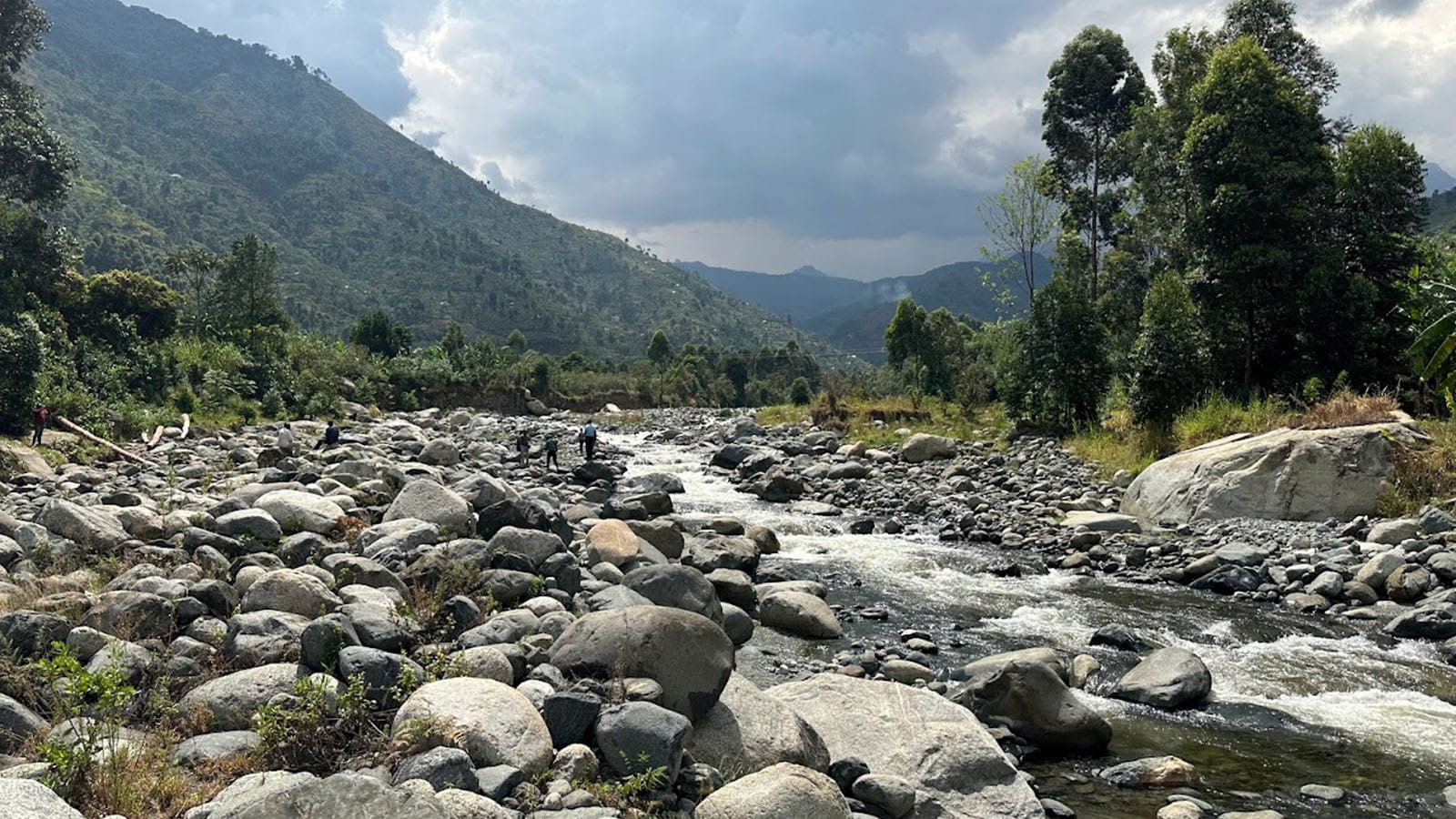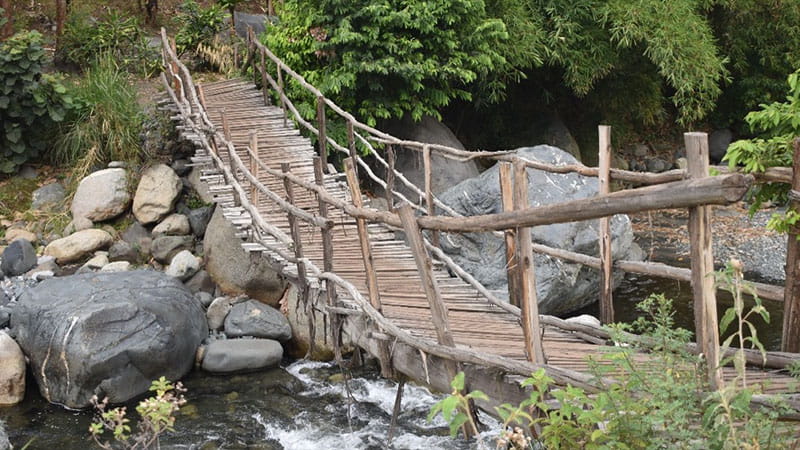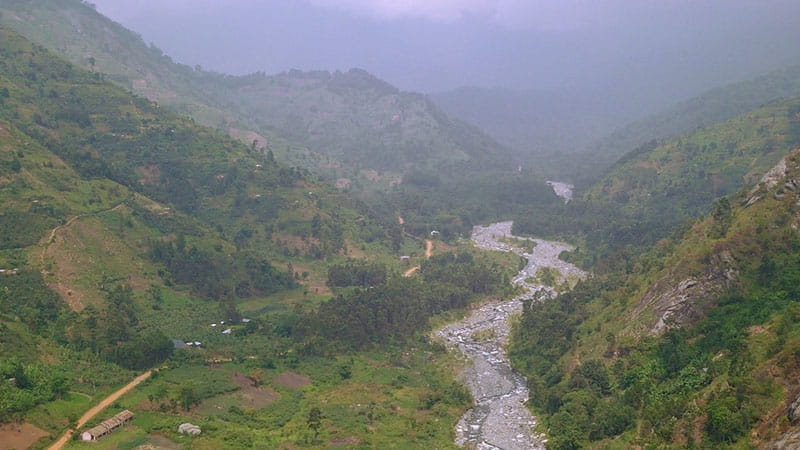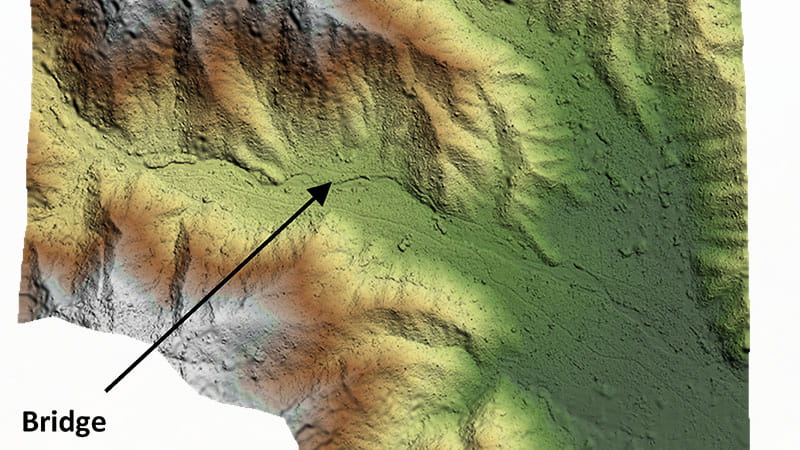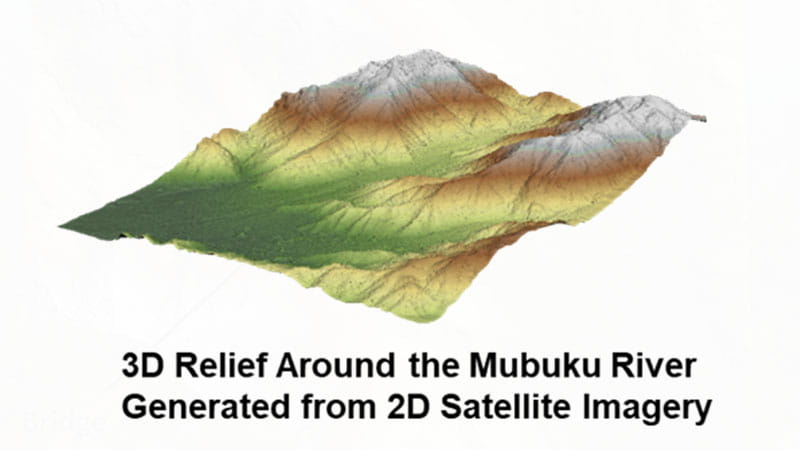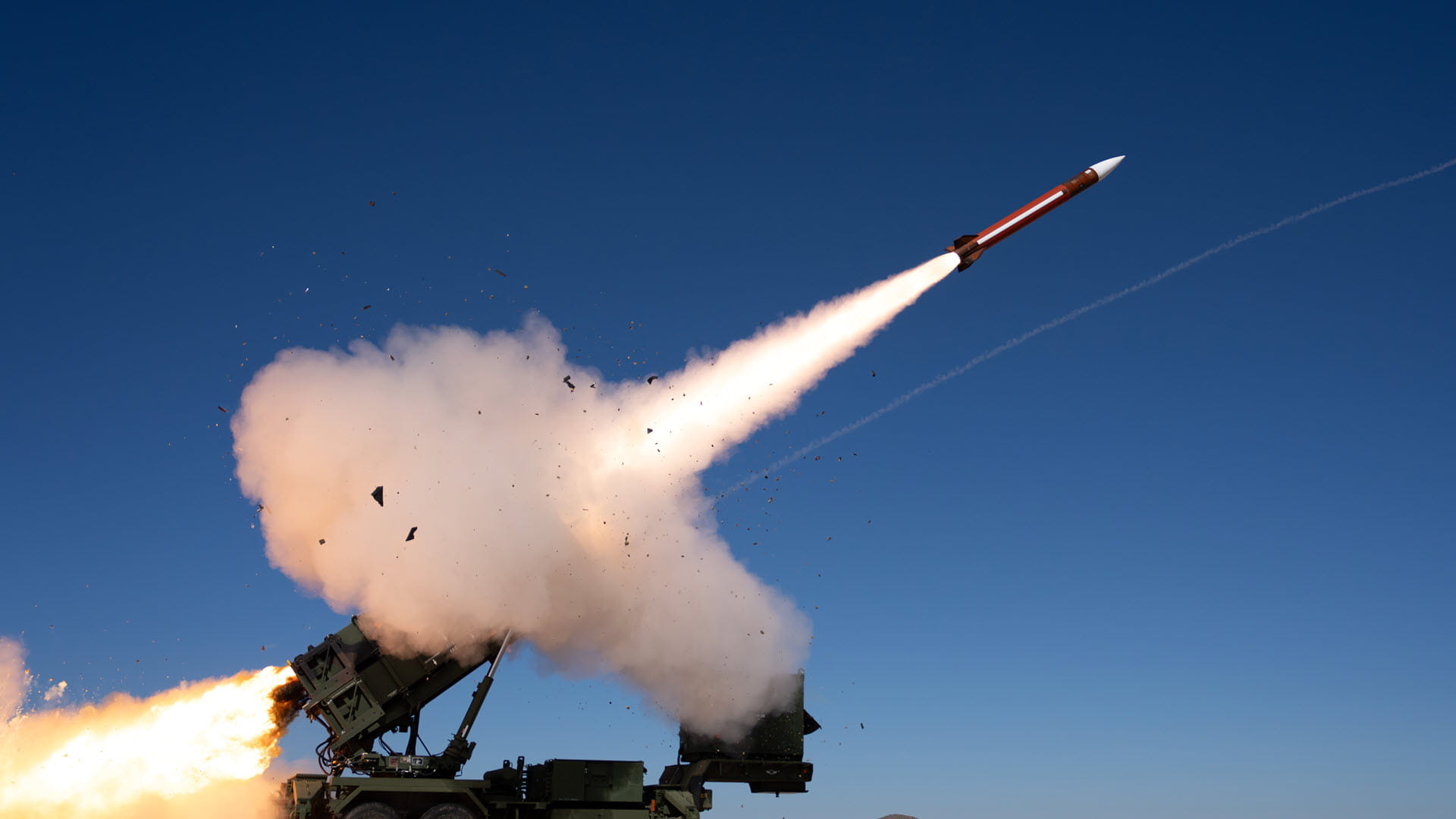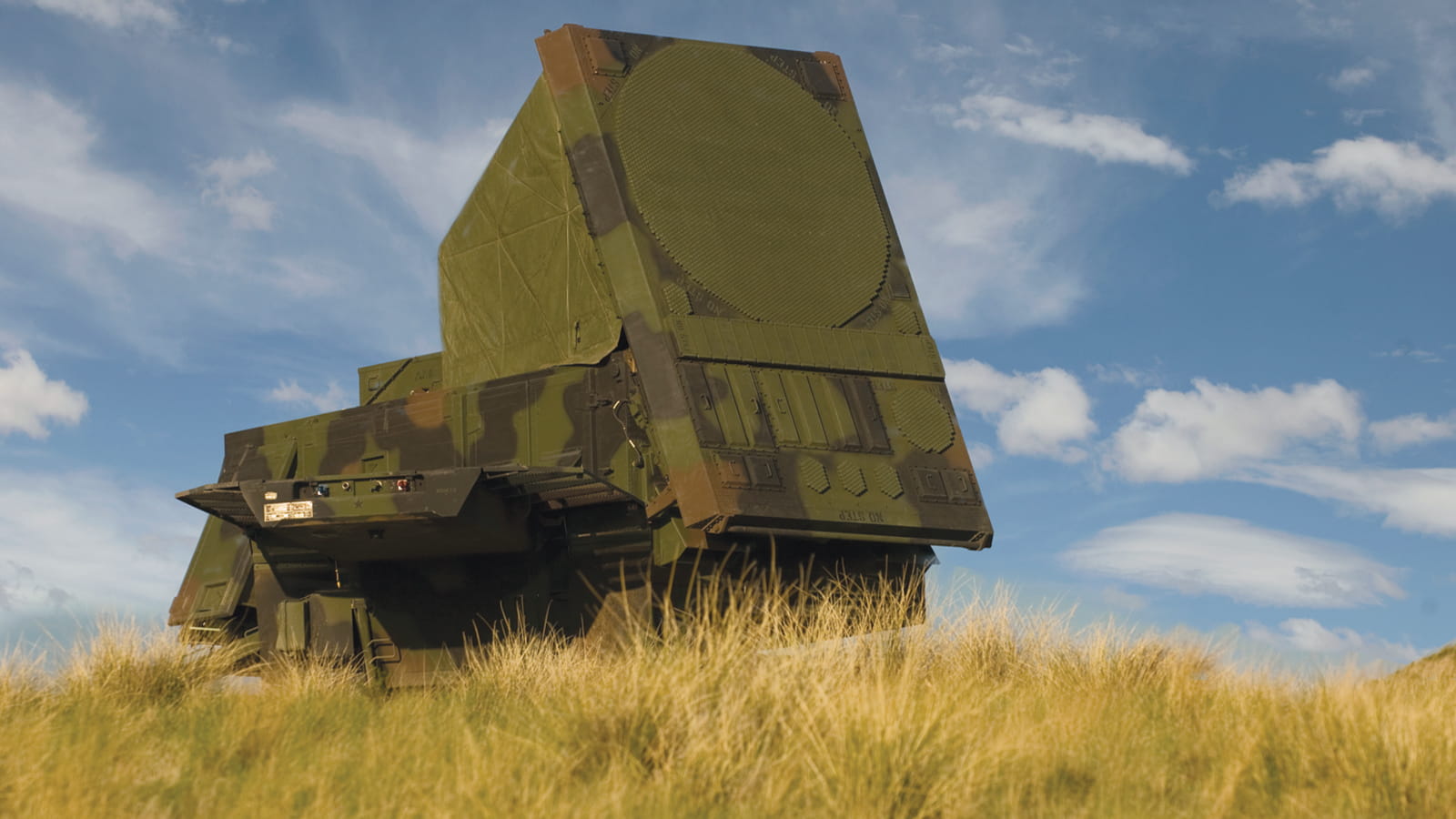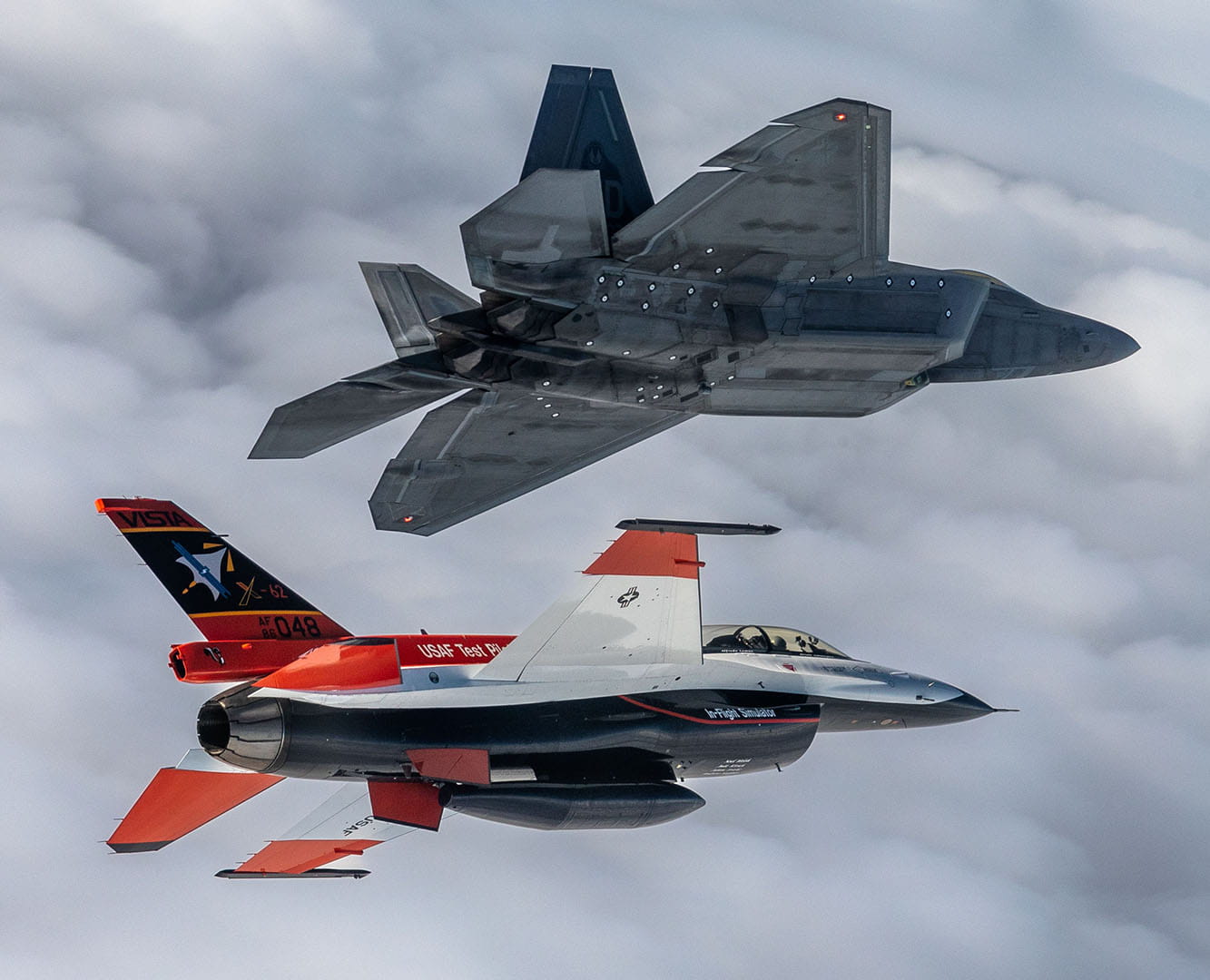Building bridges
How Raytheon Technologies and Engineers Without Borders are transforming a community in Uganda with 3D mapping technology
Engineers Without Borders-USA is using 3D mapping data from Raytheon Technologies to help design a new footbridge over the Mubuku River in Uganda.
Why it matters:
The Kinyuko Bridge will replace an old bridge that was damaged during rainy seasons. It will improve access and mobility for the Bikone village, a rural farming community of about 2,000 people who rely on the river for irrigation and fishing. The new bridge will also restore access to schools, markets and healthcare.
The backstory:
Raytheon Technologies has partnered with Engineers Without Borders-USA since 2010. The organization oversees more than 100 projects that improve water access, sanitation and infrastructure for energy and transportation.
Engineers Without Borders-USA is among Raytheon Technologies’ partners in its Connect Up initiative, which aims to lift up underserved and developing communities around the world. More than 200 employees from across the company are using their skills to support water-access projects in U.S. and overseas. Since 2010, the group has completed dozens of projects in the U.S. and abroad, in countries including India, Nepal and Tanzania.
The company is lending the services of a high-resolution satellite imagery system called R3D DEM, to provide accurate geographical information that will inform the bridge’s design.
“Previously, map data accuracy was inadequate for EWB-USA project planning. Now, Raytheon Technologies is offering high-resolution 3D map imagery, which is crucial for tasks like water routing or bridge construction,” said Guy Swope, Raytheon Technologies Satellite Imagery project lead for EWB-USA. “The 3D perspective enhances planning, and we can achieve accuracy matching the satellite data we receive. We often collaborate with universities. I want to be able to demonstrate to students how our technology can aid global humanitarian efforts.”
The R3D DEM will help the bridge builders determine the optimal location, alignment and height of the bridge. It also helps estimate cost, materials required and environmental impact.
The Kinyuko Bridge will measure 104 meters in length, or about 340 feet. It will span the river and stand about 10 feet above flood waters. The project team is finalizing its design and preparing for construction.
Bottom line:
Building bridges connects people physically, socially and economically. The use of mapping data shows how advanced technology can benefit developing communities.
What's next:
Raytheon Technologies supports Engineers Without Borders-USA through monetary donations and volunteering, but also by using its cutting-edge technologies for future projects. The organization’s Uganda office plans to continue its work on bridge construction in other parts of the country where there is a high demand and potential impact.

